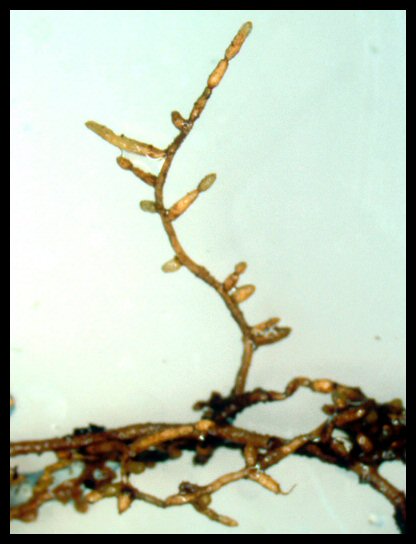EXPERT QUIZ

Answers are in MODERN ARBORICULTURE, a new
book by Dr. Alex L. Shigo. The pages with the answers are given after the
questions. The questions were written by Dr. Alex L. Shigo.
Image Source - TREES,
ASSOCIATES, and SHIGO (2 CD set.)
- What is the major difference between wood
cells and animal cells? 26
- List five ways to resist stress and
strain in a living system? 31
- Name the major parts of a tree flower.
34
- Where do buds get the energy to start
growth? 35
- What is meant by excurrent and decurrent
branching? 37
- What are three basic nodal patterns. 39
- What are the major differences between
sapwood and heartwood? 47
- Define epidermis, cortex, and
parenchyma. 49
- Contrast ring porous, diffuse porous, and
conifer wood. 50-52
- What are two types of coniferous wood?
52
- What are resign ducts? 52
- What 3 tissues make up the periderm?
53
- What is wood? 53
- Contrast symplast and apoplast. 54
- Describe the development of vessels.
55
- How do tyloses form? 57
- What are contact parenchyma? 58
- When fusiform initials differentiate,
what do they form. 57
- Describe reaction wood, compression
wood and tension wood. 63
- Contrast heartwood and discolored
wood. 64
- Contrast wounds in sapwood and
heartwood. 65
- What is vigor and how can it be
measured? 67
- What is meant by microbial succession
after wounding? 70
- Contrast the concepts of heartwood and
compartmentalization. 73
- Describe the 4 model walls in CODIT.
74-75
- What is a barrier zone? 80
- Describe how to date a wound. 81
- Describe the development of fire
blight. 85
- What are branch collars and trunk
collars? 86-87
- What is the branch protection zone? 90
- What is meant my natural target
pruning? 92
- Why is there no set angle for a correct
cut? 93
- If cavities for wildlife are wanted,
what is the best way to prune? 95
- Why are flush cuts so injurious? 104
- What is included bark? 104
- What are the two types of epicormic
sprouts? 105
- What are codominant stems? 107
- What does excessive sprouting
indicate? 115
- What is pollarding? 116
- What does 90-3-90 mean for utility
pruning? 119
- What does natural directional pruning
mean for utility pruning? 122
- What are suppressed and elite sprouts?
127 -128
- What are rusts? 136
- What are rams horns? 137
- Give 4 basic ways microorganisms infect
stems and roots. 139
- What are cankers? 140
- How do canker rots develop? 141
- Contrast stress and strain. 144
- At what phenological period do wounds
cause the greatest injury? 145
- Contrast callus and woundwood. 147 -
149
- What is the correct way to scribe
wounds? 150 - 151
- Contrast ants and termites. 155
- Contrast mites and insects. 156
- What are nematodes? 157
- Why should drain tubes not be inserted
to drain water from cavities? 161
- What portions of a trunk are the
strongest against the spread of infection? 165
- What is wetwood? 173
- Contrast wetwood with sap flow. 173
- How do trees wound themselves? 175
- How does black sooty mold develop? 177
- What are yeast? 178
- What are the two basic types of trunk
cracks? 180
- What are ring shakes? 184
- What is protection wood? 189
- Name at least 5 types of protection
wood. 189
- What is energy? 190
- Describe very briefly how energy comes
from the sun to green plants. 191 - 192
- What are 2 major abiotic factors
regulate photosynthesis? 193
- Why are manganese and iron important in
photosynthesis? 194
- What is ADP? 195
- What are the four major ways energy is
used by trees? 197
- What is respiration? 200
- Name at least 5 major survival factors
for trees. 209
- What are the 3 major ways trees die?
210
- What is meant by infection? 212
- What are enzymes? 216
- Give the major cell types in a leaf.
219
- What are two functions of guard cells?
220
- Describe briefly how water and elements
enter roots. 222
- Describe briefly transport in phloem.
226
- What is meant by potential and kinetic
energy? 229
- What is the first major substance
formed by nitrogen in roots? 234
- Why do some clays expand and shrink
greatly? 242
- Name the 13 essential elements found in
most soils. 244
- What are ions? 245
- What does pH 7 mean? 246
- Describe briefly osmotic pressure. 297
- What is plasmolysis? 248
- What are root hairs? 250
- What are mycorrhizae? 251
- Discuss briefly the mass, energy
ratio. 256
- Describe briefly, tanning of leaves.
259
- What is a young tree? 264
- What are 5 major phenological periods?
268
- Describe briefly how the Shigometer
measures vitality. 279
- How can you determine starch reserves
in cells? 277
- What is meant by cluster planting? 305
- List at least 10 early signs of tree
hazards. 318
- Describe briefly, 2 major ways branches
fracture. 323
- What are dwarf mistletoes? 341
Dictionary MAIN
PAGE
Text & Graphics Copyright © 2008
Keslick & Son Modern Arboriculture
Please report web site problems, comments and words of interest,
not found.
Contact

